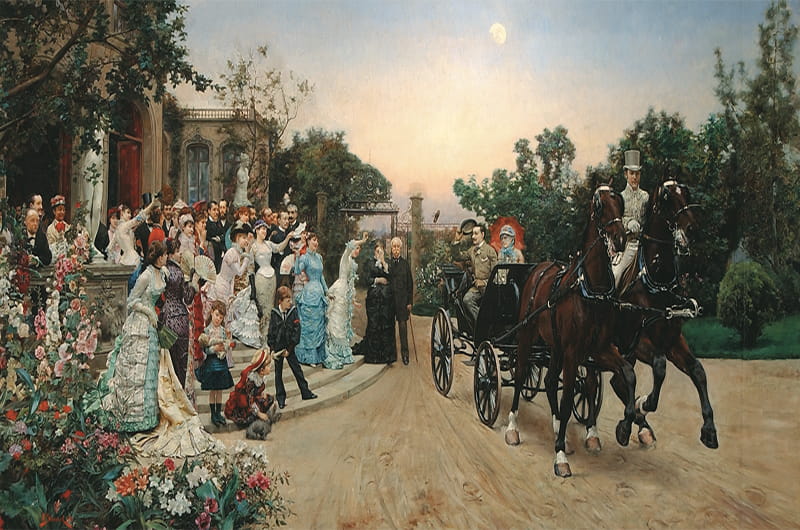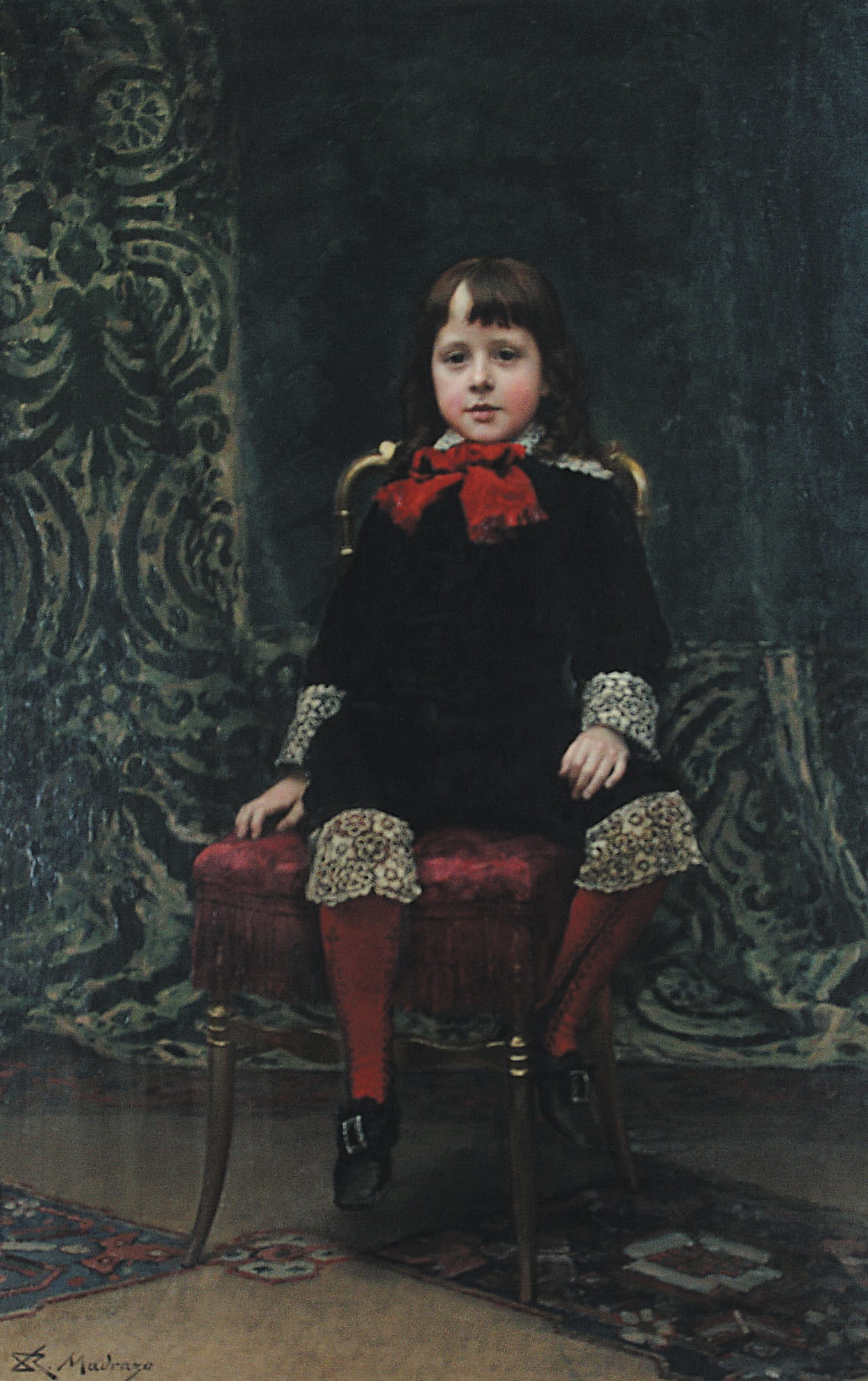Hidden Treasures: The Drexel Family in The Drexel Collection

- Drexel Selects New, World-Class Life Sciences Building at 3201 Cuthbert Street for Medical Research Operations
- Dragons Deliver: Drexel’s Annual Holiday Drives Support Military and Local Families
- Heard Around Campus — December 2025
- Celebrating a Year of Milestones, Achievements and Transformative Change

It’s easy to find Drexel University’s founder on the University City Campus.
There’s the bust of Anthony J. Drexel positioned on the stairwell overlooking the Great Court in Main Building; it was donated to the University in 1905 by his daughter, Sarah Drexel Van Rensselaer (namesake of the Van Rensselaer dormitory on campus). The same sculptor, Moses Jacob Ezekiel, also created the seated sculpture of Drexel that’s currently on Market Street in front of the Gerri C. LeBow Hall (it was moved here in 1966). There’s a portrait of Drexel (about 30 years before he founded the Drexel Institute of Art, Science and Industry in 1891) outside of the Provost’s Office in Main Building, and another portrait of him (this time depicting him about three years after founding this institution) is hung in the Paul Peck Center.
It’s a little harder to pick out the paintings of Drexel’s family members, but they’ve been on campus for most of the University’s existence. Some of these pieces of art were in Drexel’s personal art collection, which he bequeathed to the institution upon his 1893 death, and others were donated to the University by Drexel family members.
Here are some examples of the family members you can meet on campus.
A good place to look is the A. J. Drexel Picture Gallery. The gallery’s entire north wall and parts of its west wall feature portraits of his various descendants as well as those from Drexel’s lifetime.
The Drexel Collection, which got its start in 1891, holds the largest accumulation of paintings done by his father, artist-turned-banker Francis Martin Drexel, including several self-portraits, including one with his wife and oldest child, Mary Johanna Drexel, and a painting of his two eldest children, Mary and Francis Anthony Drexel. These were mostly donated by members of the Drexel family, and were not included in the founder’s donation.

On the north wall is a portrait of the founder’s wife, Ellen, that used to be shown in Drexel’s house, as depicted in 1893 photographs of his West Philadelphia villa. “Portrait of Ellen Rozet Drexel (1832-1891)” was finished in 1893 by Cecilia Beaux, one of the most successful portrait painters of her era known for painting portraits of the city’s elite. The Drexel Collection also features Beaux’s 1893 paintings of Drexel’s daughter Frances Katherine Drexel, which was in the founder’s personal collection, as well as Frances’ daughter (and Drexel’s granddaughter) Mary Astor Paul, which was donated by her daughter (Drexel’s great-granddaughter) Mary Countess of Bessborough, in 2013 after her death.
A painting of Drexel’s youngest child, George W. Childs Drexel, is also shown on this wall, and was formerly in Drexel’s house. He was the godson of his namesake, Drexel’s best friend and business partner George W. Childs, and inherited Childs’ Philadelphia Public Ledger newspaper, of which Drexel was a silent partner. The youngest Drexel was also the last remaining member of the Drexel Institute’s founding Board of Trustees, on which he had served from 1891 until he died in 1944.
The portrait of young “Master Drexel,” as it was called, was completed by Spanish painter Raimundo de Madrazo y Garreta in 1874, when the youngest Drexel was eight years old.
Noted art critic and historian Earl Shinn highlighted this painting when he reviewed Drexel’s personal art collection in the seminal 1880 three-volume series “Art Treasures in America,” which he wrote using the pseudonym Edward Strahan. Shinn wrote that the painting captured the child’s “admirable expression of tension” as the child “wearied to the last degree with hanging in mid-air, at a painter’s pleasure, in an adult conversation-chair.”
“Family legends tell the amount of specie which the little fellow drew from a convenient banker as a premium for each sitting,” Shinn wrote.

There’s another charming family legend that also relates to the youngest Drexel in a painting, supposedly depicting the Drexel clan, that is hung on the south wall of the A. J. Drexel Picture Gallery, directly across these aforementioned family portraits.
This piece of art, which is one of the Collection’s better-known items, is Julius L. Stewart’s 1880 painting “After the Wedding,” which depicts two newlyweds (rumored to be Drexel’s daughter Mae and Stewart’s brother Charles) riding off to their honeymoon. Adding more fuel to the rumor is the fact that Drexel originally possessed this painting, which was included in his collection donated to the University. The boy at the base of the steps is thought to be the youngest Drexel, though this time he is depicted wearing a Peter Thomson sailor suit, which was a popular style for children during that time period.
You can try your hand at identifying the other Drexels in the painting — it helps that some of them are depicted in the gallery.
This story was published in the summer 2017 issue of Drexel Quarterly.In This Article
Drexel News is produced by
University Marketing and Communications.
